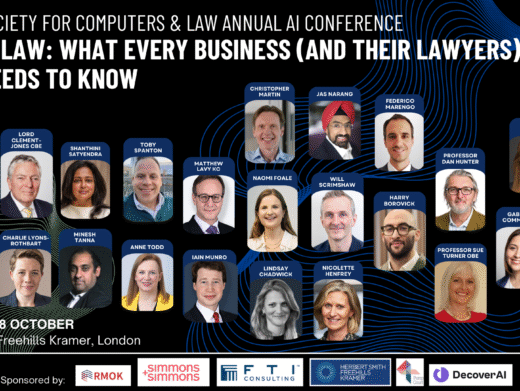The UK government has launched a consultation about changes to the UK designs framework. It aims “to create a designs system fit for the future – one that is simpler, more effective, and better able to support UK creativity and innovation in a rapidly evolving digital landscape”.
The government says that it is aware that the current system faces significant challenges. Some applicants seek to register designs for products that don’t belong to them, with limited ways to address this under current law. Following Brexit, designers face new complexities in protecting their work across both the UK and EU. And as technology advances, it says that the system must evolve to effectively protect virtual and animated designs.
The consultation contains proposals for practical solutions to these challenges with several key objectives:
- Improving the validity of registered designs through targeted measures such as novelty checks and bad faith provisions;
- Simplifying the complex designs regime, making it more accessible and easier to understand;
- Addressing issues relating to unregistered designs, providing greater legal certainty for businesses;
- Ensuring that the framework adequately protects emerging forms of design, including virtual and animated designs; and
- Exploring how the UK’s system should respond to computer-generated designs in an era of advanced AI.
The consultation also includes potential improvements to the enforcement framework, including the possibility of extending access to the Intellectual Property Enterprise Court’s small claims track for registered designs cases – with the aim of making justice more accessible to small businesses.
Graphical user interfaces and animated designs
The government wants to make sure that the designs system reflects the advances in digital technology and provide clarity for applicants filing GUIs. It aims to make it easier for designers to file the digital/animated designs they have created and to ensure the system remains relevant in the face of new and emerging technologies. The government has discounted doing nothing as an option and is seeking views on the following options. The options set out could be introduced alone or in combination:
- The Registered Designs Act predates the digital technology revolution. Although current practice allows the protection of animated designs, due the lack of relevant case law it can be difficult to determine what can be protected as an animated or moving design so the government would provide further guidance on what can be protected as a design.
- Amend legislation – the legal definition of a design, a product, or both would be updated.
- Allow users of the designs registration system to file moving/animated designs via different file format.
- Allow an additional description to be added alongside stills/video clips.
Computer-assisted designs
Due to the rapid advances in generative AI in recent years, the government is considering future options for the protection of computer-generated designs without a human author. In particular, it is seeking users’ views on the following options for computer-generated designs:
- Maintain the existing protection for computer-generated designs without a human author.
- Reform protection for computer-generated designs without a human author.
- Remove the existing protection for computer-generated designs without a human author.
- Collect data on whether AI has been used in the creation of a registered design (this would be a supplementary option).
Other issues
The government has also identified several options to provide more legal certainty and help businesses who want to protect designs in both the UK and the EU. It also wants to understand any issues which businesses have experienced since the UK left the EU. It is asking respondents to provide evidence of any problems they have faced and any mitigations which they have used.
The consultation also contains questions about criminal sanctions, search, examination, bad faith and opposition/ observation; and deferment as well as overlaps between design right and copyright and various miscellaneous matters, such as, for example, inspection of designs.
The consultation ends on 27 November 2025. After the consultation closes the government will assess responses. The government’s response to the consultation will set out next steps.




